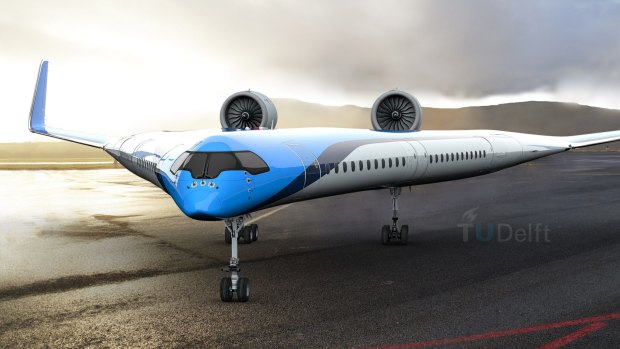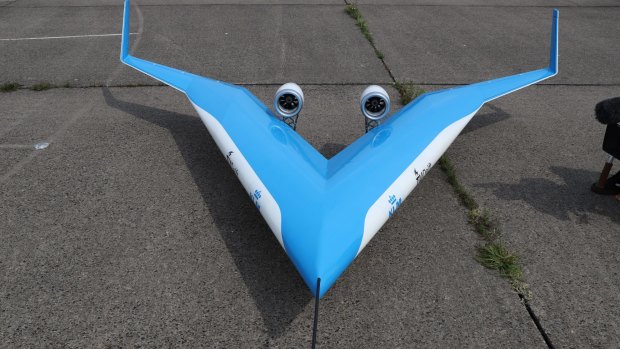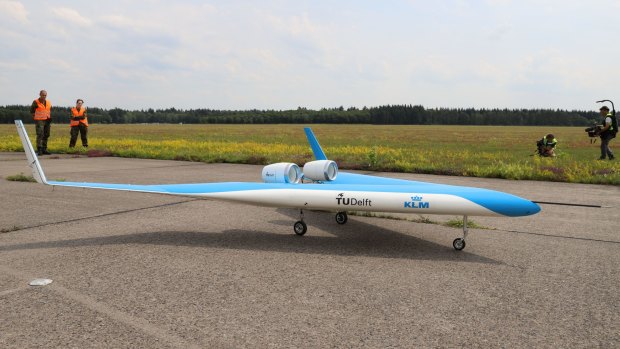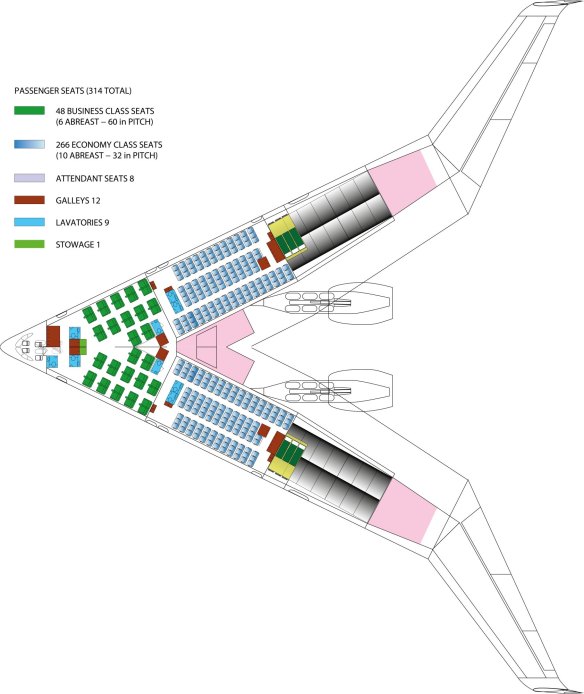This was published 3 years ago
'Flying-V' plane: Delft University of Technology complete test flight for KLM-funded design
By Craig Platt

The design aims to improve aerodynamics and reduce weight, with a resulting 20 per cent reduction in fuel consumption compared to today's most efficient aircraft.
A revolutionary new aircraft design, which could change the face of air travel, has undergone its first successful test flight.
The Flying-V, developed by the Delft University of Technology in the Netherlands, integrates the passenger cabin, cargo hold and fuel tanks into the wings, creating a V shape for the aircraft.
The design aims to improve aerodynamics and reduce weight, with a resulting 20 per cent reduction in fuel consumption compared to today's most efficient aircraft.

The scale model used for the test flight.
There are some big names involved in the Flying-V project, including Dutch national airline KLM, which is funding its development, and aircraft manufacturer Airbus, as one of the business partners.
A scale model was used for the test flight, three metres wide and weighing 22.5 kliograms. The flight took place at an air base in Germany, with a team from Airbus on hand to assist.
Project leader Dr Roelof Vos said the test flight was a success.

The scale model took off after hitting 80 km/h.
"One of our worries was that the aircraft might have some difficulty lifting-off, since previous calculations had shown that 'rotation' could be an issue," he said.
"The team optimised the scaled flight model to prevent the issue but the proof of the pudding is in the eating. You need to fly to know for sure."
The model took off easily after reaching 80 kilometres per hour, but more work needs to be done on the landing, which was "slightly rough" according to the university's statement.
The design requires the aircraft to land with its nose high, similar to the supersonic Concorde, which, like that jet, means the landing gear needs to be extra long.
One of the aims of the design is to make flying more sustainable. Delft University teams are also investigating electric and hybrid propulsion systems to reduce carbon emissions.
The cabin layout for a full-scale version has already been designed, with capacity for 314 passengers seated across business and first class. There are effectively two passenger cabins, one down each leg of the "V" shape.
However, those thinking this wide design might mean more space will be disappointed - the design allows for 10 seats abreast in each 6.1-metre-wide cabin. That's roughly the same amount of space offered by a Boeing 747 jumbo jet, but slightly more than more modern aircraft like the Boeing 787 Dreamliner and Airbus A350.

The Flying-V's successful test is the second time in recent days that a new aircraft design has been tested. Otto Aviation announced recently that its Celera 500L "bullet" plane has completed 31 test flights, using a full-scale prototype.
Unlike the Flying-V however, the Celera 500L is designed for just six passengers and is not planned to scale up to compete with modern aircraft in passenger capacity.
Sign up for the Traveller newsletter
The latest travel news, tips and inspiration delivered to your inbox. Sign up now.